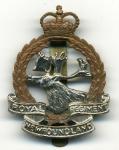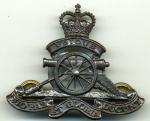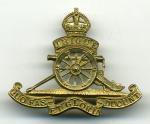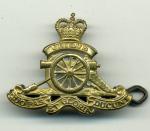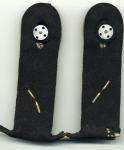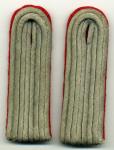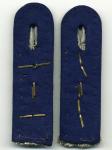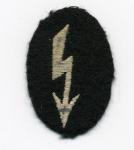Here's a little bit of history on the next one. At the time it was a member of the British army, 29 div 88 Bde to be exact: Almost immediately, the opening phase of the 29th Division?s attack began to falter under withering enemy fire. Confusion was compounded by poor communication. General de Lisle mistook German flares for a signal of success from the attacking 87th Brigade, and ordered the 88th Brigade to move, with the Essex and Newfoundland Regiments advancing ?as soon as possible.? But the Essex soldiers were unable to leave their trenches because of the large number of dead and wounded soldiers. Thus it was that the Newfoundlanders moved off on their own at 9:15 a.m., their objective the first and second line of enemy trenches, some 650 to 900 metres away. In magnificent order, practiced many times before, they moved down the exposed slope towards No Man?s Land, the rear sections waiting until those forward reached the required 40-metre distance ahead. No friendly artillery fire covered the advance. A murderous cross-fire cut across the advancing columns and men began to drop, at first not many but then in large numbers as they approached the first gaps in their own wire. Private Anthony Stacey, who watched the carnage from a forward trench with Lieutenant-Colonel Hadow, stated that ?[m]en were mown down in waves,"? and the gaps cut the night before were ?a proper trap for our boys as the enemy just set the sights of the machine guns on the gaps in the barbed wire and fired? (Stacey 17A). Doggedly, the survivors continued on towards The Danger Tree. ?The only visible sign that the men knew they were under this terrific fire,? wrote one observer, ?was that they all instinctively tucked their chins into an advanced shoulder as they had so often done when fighting their way home against a blizzard in some little outport in far off Newfoundland? (Raley 37?40). Few advanced beyond it. Stacey recalled that from his vantage point he ?could see no moving, but lots of heaps of khaki slumped on the ground? (Stacey 19). The few who did get to the German lines were horrified to discover that the week-long artillery barrage that preceded the attack had not cut the German barbed wire. This fact was known by commanders the night before, thanks to a report by a Newfoundland reconnaissance team. The news was dismissed on the grounds that it was due to the ?nervousness of men who were facing battle for the first time? (Gilham). As a consequence, the majority of the soldiers who reached the enemy trenches were killed, tangled in the uncut wire. In less than 30 minutes it was all over. At 9:45 a.m., Hadow, who had witnessed the annihilation of his regiment from a forward position, reported to Brigade Headquarters that the attack had failed. Incredibly, he was ordered to collect up any unwounded and resume the attack. Fortunately, wiser counsel prevailed and the order was countermanded. Throughout the day survivors attempted the long and dangerous journey back to their own lines, many being an easy target for enemy snipers and artillery fire. Ron Dunne lay wounded on the battlefield for several days. On the second day, convinced that he would soon die, his thoughts turned homeward to Bonavista Bay and his mother. ?I said me prayers,? he recalled, and then drifted off, unaware that rescue was on the way (Memorial). That night the search began for survivors. When the roll call was taken, only 68 responded. The full cost would not be known for several days. The final figures revealed that the regiment had been virtually wiped out: 710 killed, wounded or missing. Most were struck down before they reached beyond their own front line (Middlebrook 269).




